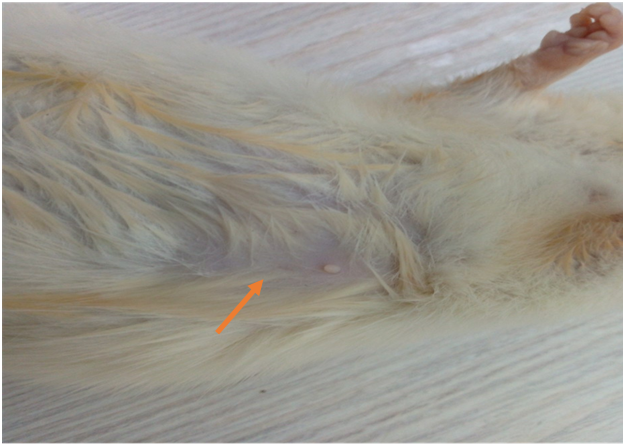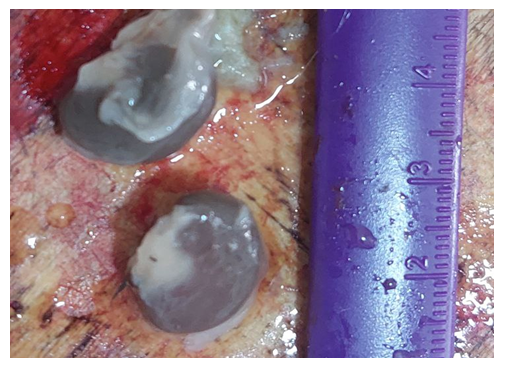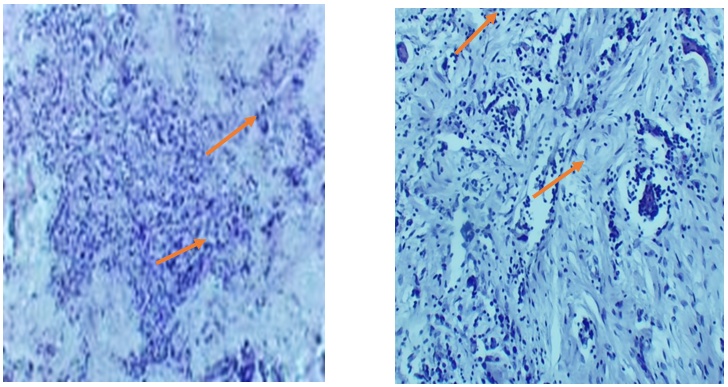-
Paper Information
- Next Paper
- Previous Paper
- Paper Submission
-
Journal Information
- About This Journal
- Editorial Board
- Current Issue
- Archive
- Author Guidelines
- Contact Us
American Journal of Medicine and Medical Sciences
p-ISSN: 2165-901X e-ISSN: 2165-9036
2024; 14(5): 1197-1199
doi:10.5923/j.ajmms.20241405.11
Received: Apr. 8, 2024; Accepted: May 5, 2024; Published: May 9, 2024

Induction of Malignant Neoplasm of the Mammary Gland in Rats Using the Carcinogen 7,12-dimethylbenz(a)anthracene in the Experiment
Jurat Bakhronov
Bukhara state medical institute, Bukhara, Uzbekistan
Correspondence to: Jurat Bakhronov, Bukhara state medical institute, Bukhara, Uzbekistan.
| Email: |  |
Copyright © 2024 The Author(s). Published by Scientific & Academic Publishing.
This work is licensed under the Creative Commons Attribution International License (CC BY).
http://creativecommons.org/licenses/by/4.0/

Breast cancer is the most common female cancer, especially registered in the developed countries of the world. Doctors name risk factors, the presence of which does not mean that the disease will necessarily occur, but awareness of them helps early diagnosis. This disease is one of the most common malignant diseases in women: according to WHO, in 2020, 685 thousand women died from it worldwide and more than 2 million new cases were diagnosed. The disease generates fears and rumors around itself that diagnostic technologies and treatment methods are constantly being improved. It is equally important to know the symptoms of breast cancer and be sure to conduct a monthly breast self-examination.
Keywords: Mammary gland, Tumor, Carcinogen, Calcification, Leukemia
Cite this paper: Jurat Bakhronov, Induction of Malignant Neoplasm of the Mammary Gland in Rats Using the Carcinogen 7,12-dimethylbenz(a)anthracene in the Experiment, American Journal of Medicine and Medical Sciences, Vol. 14 No. 5, 2024, pp. 1197-1199. doi: 10.5923/j.ajmms.20241405.11.
1. Introduction
- In the world, breast cancer is the 2nd leading cause of cancer death among Europeans, Africans, Asians and Pacific Islanders, American Indians/Alaska Natives and Latin American women (after lung/bronchial cancer), but it is the main cause of cancer death among women in developed countries [1]. In 2021, women registered:- 281,550 new cases of invasive breast cancer- 43,600 deaths from it- 49,290 new cases of breast cancer [2]Breast cancer in men accounts for about 1% of the total number of cases [3]. In 2021, 2,650 new cases of invasive breast cancer and 530 deaths from it were registered in the United States [4]. In men, the symptoms, diagnosis and treatment are the same as in women, although their disease is more often manifested at a later stage [5].Early signs of breast cancer include changes in the skin of the breast (swelling, redness or other visible differences in one or two mammary glands), an increase in the size or shape of the breast, changes in the appearance of one or both nipples, discharge from the nipples, painful sensations in the breast area, seals, nodules in one or both mammary glands [6,7].Breast cancer ranks first among all oncological diseases in women over the age of 50 [8]. The incidence of breast cancer is steadily increasing. About 1 million 300 thousand breast cancers are registered annually in the world [9].In 1954, a bill was passed in the United States, instructing the National Institute of Oncology to develop a program for purposeful and effective search for drugs for chemotherapy [10]. Over ten years, about 83 thousand synthetic substances, 115 thousand fermentation products and over 17 thousand substances of plant origin have been tested on a million mice [11]. As a result, doctors had 4 drugs at their disposal for the treatment of children with acute lymphoblastic leukemia - methotrexate, prednisone, 6-mercaptopurine and vincristine. All of them were used for cancer treatment [12,13].For example, benzopyrene tumors are induced by administration of benzpyrene to mice once subcutaneously in an oil solution. This leads to the uniform development of subcutaneous fibro sarcomas in all animals at the injection site within 4-5 weeks after administration [14].
2. Materials and Methods
- The group of experimental animals consisted of 240 young virgin female rats. This type of rat lives on average 1.5-2 years, starting its reproductive function, which lasts about 1 year, begins at the age of 60-90 days. During this period, they have from 7 to 10 pregnancies, each time from 7 to 10 cubs are born.Breast tumors were induced by a single dose of 20 mg of 7,12-dimethylbenz(a)anthracene (DMBA) diluted in sunflower oil (1 ml), which was injected subcutaneously into the nipple to induce breast cancer. All rats with an average weight of 182.9 g (161-213 g) received a chemical carcinogen at the age of 183 days (6 months).The animals were raised in our laboratory under ideal conditions of temperature, humidity and light, fed with an appropriate diet in the form of pellets and filtered water.We conducted weekly medical examinations. Each rat had 6 pairs of mammary glands, which were checked by examination, touch and palpation.At the age of 229 days (6 weeks after DMB A), the slaughter of 6 animals was carried out in the appropriate rows in the morning, on an empty stomach by instant decapitation under ether anesthesia.
 | Figure 1. Appearance neoplasm of the mammary gland of rats |
 | Figure 2. Organometry of 7.5-month-old rats of the experimental group who took a carcinogen (7,12-dimethylbenz(a)anthracene) |
 | Figure 3. Malignant neoplasms of the mammary gland in rats Atypical breast cells |
3. Results and Discussions
- Many studies have shown that some animal cancer models have been created to study various aspects of cancer biology, including breast cancer. Strong evidence has shown that the administration of 7,12-dimethylbenz(a)anthracene (DMBA) to animal models can mimic human breast cancer in many ways. This preliminary study was aimed at developing models of breast cancer in rats, which will be used to further study phytotherapy as an alternative drug for breast cancer.The control group received only 0.5 ml of sunflower oil and 0.5 ml of saline solution. Tumor detection by palpation and measurement of body weight of rats was carried out every week after induction of DMBA. 2 weeks after DMBA induction, tumor development was examined using ultrasound. No significant differences in body weight between DMBA-induced rats and non-DMBA-induced rats were observed for 8 weeks after induction. Starting from the ninth week, the body weight in the DMBA group decreased significantly (p=0.02) compared to the analog. A solid formation in the chest area was first detected in the third week in one rat. Three weeks later, solid masses were found in all DMBA-induced rats, which is confirmed by ultrasound images showing hypoechoic foci with uneven edges and calcification indicating malignant neoplasms. Malignant lesions caused by DMBA in female rats were demonstrated by ultrasound examination.
4. Conclusions
- The results obtained open up the prospect of using intra-tumor morphological heterogeneity of breast cancer as a model for studying the mechanisms of plasticity, invasion and metastasis of tumor cells.In particular, the following areas of research seem relevant:- mechanisms of interaction of cells of various morphological structures and their microenvironment, the possibility of reciprocal regulation; - stability of morphological structures, the possibility of transition from one morphological state to another; - analysis of the heterogeneity of stem traits in various morphological structures and their correlation with the degree of mesenchymality of tumor cells; - the role of mutations by the type of single-nucleotide substitutions, deletions and epigenetic disorders in the development of intra-tumor morphological heterogeneity and the formation of the phenotype of tumor cells that make up morphological structures.
 Abstract
Abstract Reference
Reference Full-Text PDF
Full-Text PDF Full-text HTML
Full-text HTML